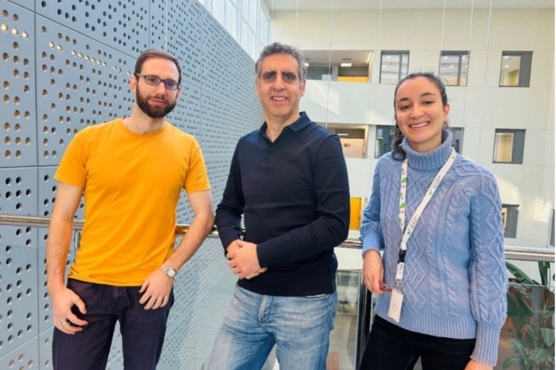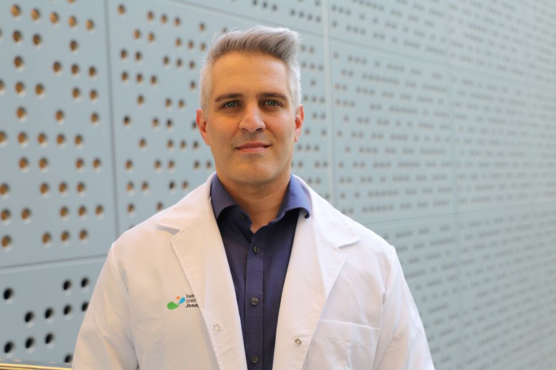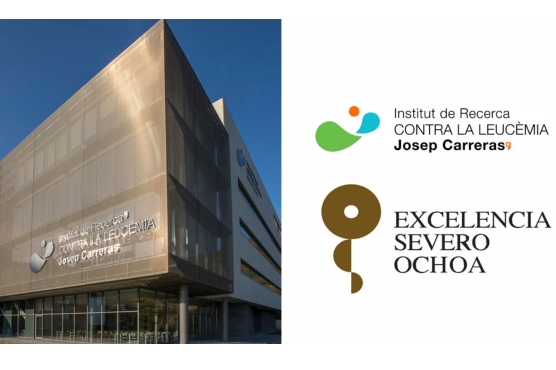Researchers from the Josep Carreras Leukaemia Research Institute, spearheaded by the Cancer Epigenetics group led by Dr. Manel Esteller, described the effects of chemotherapy at the single cell resolution in the bone marrow of Myelodysplastic Syndrome patients. The results help better understand which cellular populations are more sensitive to azacitidine, an epigenetic drug, and offer valuable insights on how to treat relapses after treatment.
Alterations in the chemical modifications that control gene expression, known as Epigenetics, have proven to be one of the most characteristic properties of all human tumours. This realization has led to the development of very intense pharmacological research to find drugs that act at this level against cancer. Today, there are nine epigenetic drugs approved for use in oncology, especially in leukaemia, lymphomas and soft tissue tumours. However, a mystery remains: Why do some of these patients respond clinically to these compounds while in other cases they show resistance to their action?
A recent article authored by Dr. Ignacio Campillo and Marta Casado, researchers from the Cancer Epigenetics led by Dr. Manel Esteller, Director of the Josep Carreras Leukaemia Research Institute, ICREA Research Professor and Chairman of Genetics at the School of Medicine of the University of Barcelona, provides the first answer to this question by showing how the persistence of certain cancer cells, bearing specific mutations, is associated with the lack of clinical benefit of these pharmacological principles.
The research, published at the journal Cancer Research Communications, the official journal of the American Association for Cancer Research (AACR) for the rapid publication of interesting results, is a joint effort of several groups at the Josep Carreras Institute, including single cell specialists Dr. Elisabetta Mereu and Dr. Caterina Mataand clinical researchers Dr. Lurdes Zamora, Dr. Blanca Xicoy, Dr. Gaël Roué and Dr. Franscesc Solé.
“We decided to focus our study on a type of bone marrow cancer, where leukaemia blood cells are formed, called myelodysplastic syndrome because the treatment of choice is an epigenetic drug called azacitidine, an inhibitor of DNA methylation. We studied what was happening at the DNA and protein levels in thousands of cells separated from these patients at two time points: before and after receiving the epigenetic therapy”, explains Dr. Esteller about the research.
“We managed to characterize more than 30 cell subtypes and 50 genes, observing that the patients where pharmacological treatment had an effect had a particular profile at the individual cell level: they presented a decrease in the number of mutations in stem and progenitor cells and in immature granulocytes and monocytes. This suggests that if we do not eliminate these altered primitive cells, which appear early during the tumour process, the therapy has little chance of success.
The good news for patients resistant to epigenetic drugs is that we have detected that some of the new mutations that appear may now be targets of other drugs specifically directed against them. As if it were a game of cat and mouse between the doctor and the cancer, the tumour’s strength against one drug generates its vulnerability against another drug.
Hence the importance of molecular studies at the single cell level that allow us to predict not only the prognosis of the disease but also what this leukaemia may be sensitive to”, concludes the researcher.
The research has received funding from the Spanish Ministry of Science and Innovation, the Marie Skłodowska-Curie Action, the CELLEX Foundation and “La Caixa” Foundation among others.







